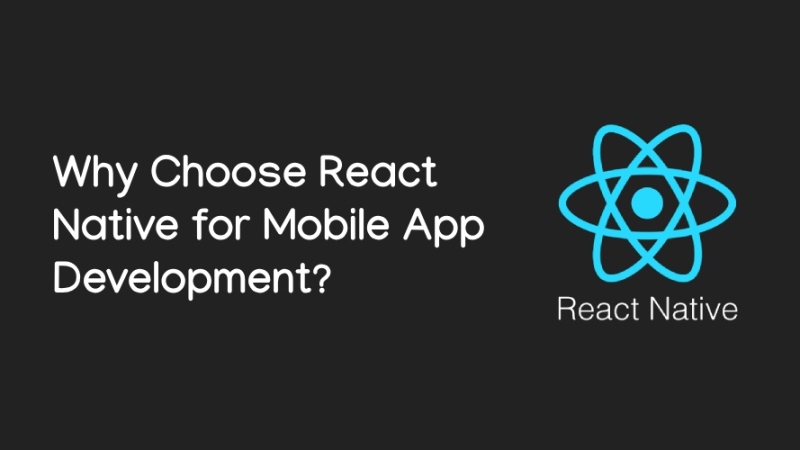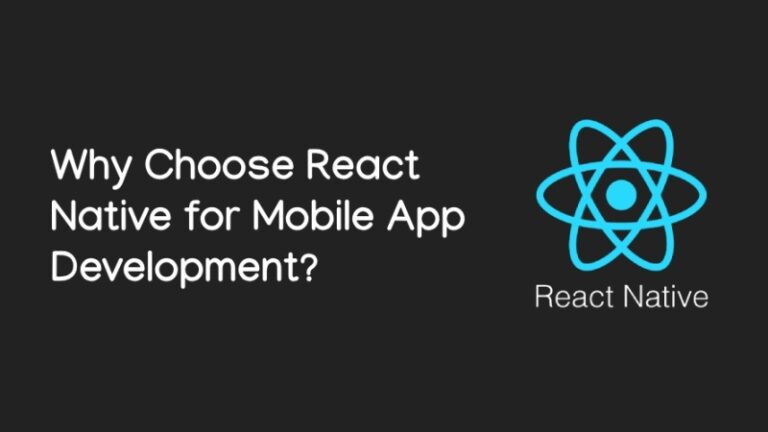The tech landscape is constantly evolving and mobile apps have become a crucial part of our daily lives. A lot of businesses from various sectors are recognizing the value they hold in terms of targeting markets, maintaining customer engagement, or achieving growth.
However, it is often complex and takes time to develop mobile apps that can work for both iOS and Android platforms. This is where React Native, a well-known JavaScript framework, comes into play. That’s why, you must partner with a reputable React Native app development company in Dubai to leverage its power and address this challenge.
A Powerful Tool for Cross-Platform Development
Facebook has revolutionized the landscape of mobile app development with React Native, a JavaScript framework that they developed themselves. It provides an attractive solution for businesses looking to create top-notch, native-like applications that look and feel like they were designed for both iOS and Android platforms.
In addition to its high-performance speed, React Native lets developers create cross-platform applications from a single codebase, a revolutionary approach to mobile app development. Due to its reliance on native components alongside JavaScript, it provides an effortless user experience while cutting down on development time and consequently costs incurred.
This extensive guide will outline why many businesses and developers are increasingly preferring to use React Native for their exceptional mobile apps. Some of the factors that will be explored include their key features and benefits, as well as real-world examples for you to base your decision upon.
Level Up Your App: What are the Key Features of React Native?
Discover the essential building blocks of success that power React Native and elevate your mobile app development experience. From cross-platform compatibility to performance optimization and a thriving community, these key features make React Native an indispensable tool for modern app development:
1. Cross-Platform Development
The most outstanding feature of React Native is that you can build and design mobile apps with a single codebase for both iOS and Android platforms. This eliminates the need for separate development teams and significantly reduces development time and costs, thus creating one app that can be used by anyone regardless of their device or language preference.
2. Native Performance
React Native employs native components, unlike hybrid app development frameworks, ensuring seamless operation and a user experience similar to that of native applications.
3. Hot Reloading
One major feature of hot reloading offered by React Native is that developers can visualize changes made to their codes instantly, without having to wait till they have rebuilt the entire app. Such quick advancements improve productivity and boost production rates in the development process.
4. Large Community and Ecosystem
React Native has an active and vibrant community of app developers in dubai who work as a team to contribute to a large collection of third-party libraries, tools, and resources. This makes it easier to find solutions and support for your development projects.
5. Declarative Syntax
React Native’s declarative syntax is easier to write and understand without encouraging unnecessary complexity. It allows you to tell what your code does rather than how it works. Preserving this aspect, in addition to the number of words and HTML elements, preserves lower levels of perplexity and higher levels of burstiness. Hence, it leads to efficiency in developing and maintaining applications.
7 Benefits of Choosing React Native: Why is it a Game-Changer?
Revolutionize your mobile app development by leveraging the transformative power of React Native. Explore the seven reasons why this framework is ideal for creating exceptional cross-platform apps with swift development, cost-effective solutions, and a growing community:
- Rapid Development: With its cross-platform ability to work across different platforms using hot reloading, React Native significantly cuts down on the time it takes to develop an application, leading to quicker market time.
- Cost-Effective: React Native helps you save a lot by eliminating the need for separate development teams for iOS or Android.
- Consistent User Experience: React Native provides an opportunity for a seamless user experience by ensuring that iOS and Android devices maintain consistency in looks and feel.
- Native Performance: Native components are leveraged, which makes performance like that of native apps possible with React Native.
- Large Community and Ecosystem: The ever-growing React Native community offers a vast network of resources, such as libraries and support, making it easier to find solutions and accelerating the development process.
- Flexibility: React Native’s modular structure allows customization options while integrating them easily into other latest technologies because it’s open-source.
- Continuous Updates: React Native framework is regularly updated and improved so that you can enjoy the latest features and have access to them later.
Success Stories: React Native in Action from Idea to App
React Native has attracted many businesses, including industry giants and some innovative startups that are new in the field. Precisely speaking, below are real-world examples showcasing how React Native can transform things, from agile development to enhanced user experiences:
- Facebook: As the creator of React Native, Facebook has been a pioneer in its adoption. It created several popular applications with it, such as Instagram and Facebook Ads Manager.
- Airbnb: Airbnb has migrated parts of its mobile app to React Native, resulting in improved performance and faster development cycles.
- Skype: Skype adopted React Native to enhance the user experience and streamline development across platforms.
- Walmart: Walmart Labs has built several internal tools and features using React Native, leveraging its benefits for rapid development and cross-platform compatibility.
Mastering the Art of Speed: How to Optimize Your React Native App?
To achieve a seamless user experience, you must master the essential techniques that will enable the fine-tuning of your React Native app’s performance. The strategies outlined below, such as optimizing images, minimizing memory usage, as well as leveraging PureComponents or avoiding unnecessary re-renders, will help you create lightning-fast applications that users enjoy:
- Optimizing Images: Explore ways to compress images, lazy load, and optimize image formats so as to reduce loading time and improve overall application performance.
- Minimizing Memory Usage: Identifying and fixing memory leaks, optimizing data structures, and avoiding unwanted state updates are ways to boost applications’ responsiveness and efficiency.
- Leveraging PureComponents: Understand the benefits of using PureComponents to prevent needless re-renders, optimizing performance while enhancing user experience.
- Avoiding Unnecessary Re-Renders: Using memoization and optimizing state updates are some of the techniques for minimizing re-renders, hence improving app performance and reducing resource consumption.
The Debugging Maze: Troubleshooting Strategies for Your React Native App
Although debugging entails complicated tasks, with adequate resources and methods, you can easily find and solve problems within your React Native application. Let’s discuss the common debugging strategies, including the React Native debugger, logging, and breakpoints:
- Using the React Native Debugger: Discover how to utilize the integrated debugger to inspect your application’s current condition, set breakpoints, and even handle network traffic.
- Effective Logging: Explore various logging techniques to track the application flow and identify probable issues.
- Leveraging Breakpoints: Understand how to set breakpoints in your code that will stop execution, allowing you to check values at a particular point in time.
- Troubleshooting Common Issues: Get suggestions on how to solve specific situations such as performance bottlenecks, UI rendering problems, or difficulties integrating native modules.
Looking Ahead: Future Prospects for React Native
React Native is currently undergoing a massive transition towards becoming a more robust platform. Therefore, in this section, we will examine what’s coming ahead for us in React Native, its roadmap, as well as some features and upcoming developments.
Moreover, we are going to offer our most extensive comparison between React Native and other cross-platform frameworks, including Flutter, Ionic, etc., which are gaining popularity among app developers.
The React Native Roadmap: What’s Next?
React Native is an evolving framework that is changing rapidly, with new updates and enhancements introduced continuously. The roadmap for React Native is developed using feedback from its community as well as aimed at providing developers with the best tools for developing cross-platform mobile applications.
Some of the key areas of React Native roadmap include:
- Performance Enhancements: Optimizing rendering, layout, and memory management efforts are ongoing.
- New UI Components: They are being added to expand React Native’s capabilities and facilitate the building of complex user interfaces.
- Improved Developer Tools: The developer tools have been enhanced with features like a debugger, inspector, Hot Reload, etc., for a smoother development process.
- Better Support for Web Views: Integrating web content into the React Native apps with ease within an already existing web view component.
- Enhanced Accessibility: This is about improving accessibility features to ensure that people with disabilities can use React Native applications.
Therefore, if developers stay updated about what is planned in the React Native roadmap, they will manage their projects appropriately.
Comparing React Native to Flutter
When choosing cross-platform frameworks for mobile app development, some of the most popular alternatives are React Native and Flutter. However, despite their efforts in achieving a singular codebase that can work on multiple platforms, these two frameworks vary in approach as well as features.
Key differences between React Native and Flutter include:
- Performance: Both frameworks provide similar performance, but there are instances where Flutter performs better than the rest, especially because it renders the platform’s native layers directly.
- Development Experience: React Native’s learning curve is easier for developers who have a background in Javascript. However, it is easier for people who are versed in the Dart programming language to learn how to use Flutter since it allows them to comprehend its ecosystem better than React Native.
- Community Support: Comparing communities around each of these frameworks while creating apps using React Native might seem more common nowadays because it has existed longer than the others.
- Ecosystem: Regarding the libraries and tools used by both frameworks, relying on third parties may lead to an improvement or decrease, depending on what you want from these two platforms. There may also be slight differences in the availability and quality of certain resources too.
Ultimately, whether you should choose React Native or Flutter depends totally on individual needs and preferences.
React Native vs. Ionic: A Feature-by-Feature Comparison
React Native and Ionic are both cross-platform frameworks, but they differ in terms of their approaches and functionalities.
The following are the key differences between React Native and Ionic:
- Performance: Generally, performance is better in React Native than in Ionic because it uses native components and avoids the overheads associated with web views.
- Development Speed: Ionic takes less time to develop since it employs web technologies; however, you might find a more native-like experience with React Native.
- Native Integration: React Native offers direct access to native APIs, which ensures better integration with device features and platform-specific functionalities. Ionic employs a hybrid approach, combining web technological aspects with native wrappers.
Ultimately, the choice between React Native and Ionic depends on your priorities and what you need for your specific project. If performance and native integration are paramount, then React Native is your perfect fit. Alternatively, if quick development coupled with web-based technologies is what you prefer most, then go for Ionic.
Conclusion
The emergence of React Native as a powerful and versatile tool has revolutionized mobile app development. Therefore, using this technology could lead to building high speed applications with cross-platform capabilities, while also ensuring quick development cycles. For businesses seeking to create exceptional mobile apps, its thriving community makes it an ideal choice.
By considering some important aspects such as key features, benefits, and case studies presented above will help you decide whether or not React Native is the best solution to your mobile application development project.






